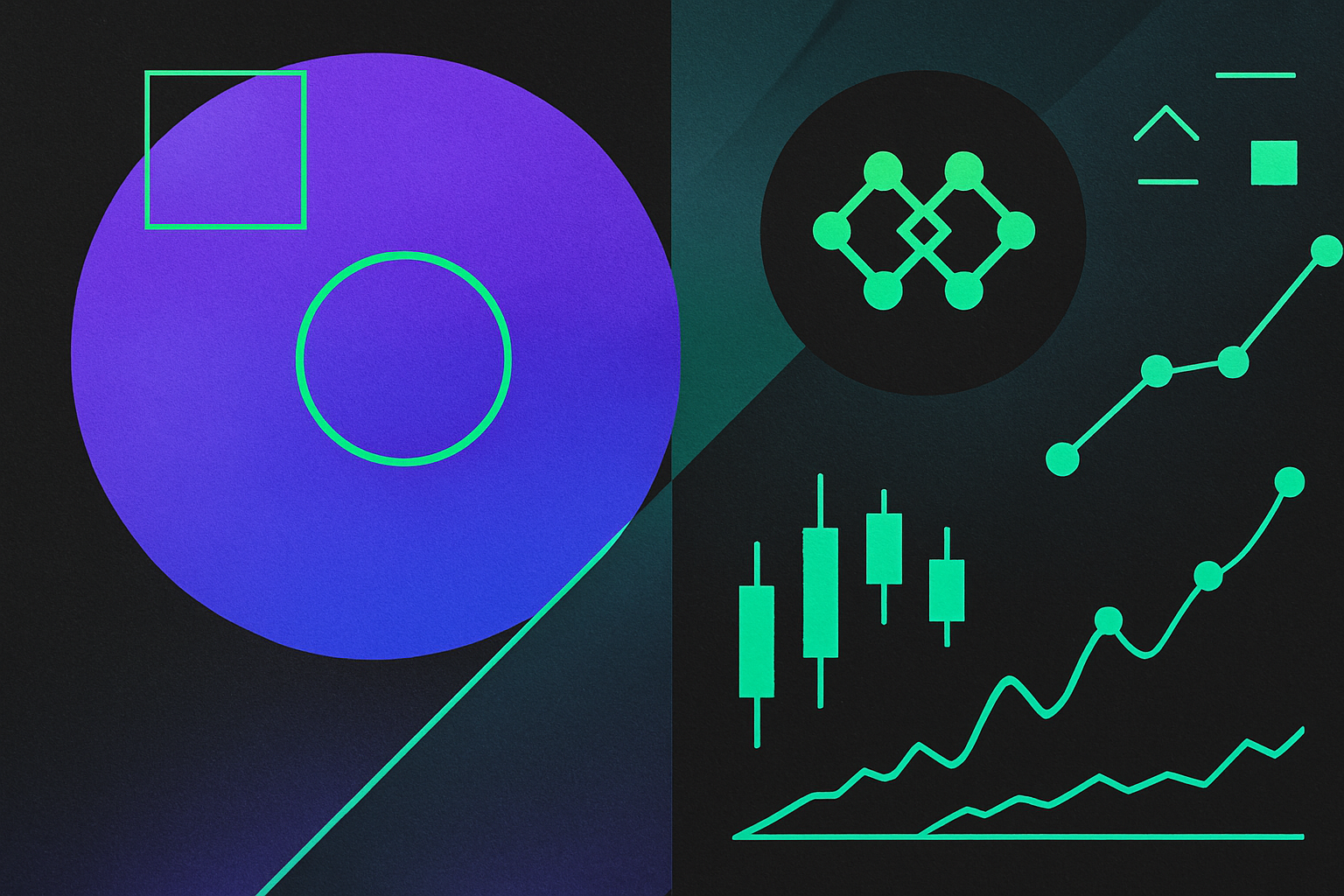How BLOBBASEFEE Impacts Celestia Data Blob Transactions and Market Pricing

The recent surge in Celestia’s data blob activity has put the spotlight on the BLOBBASEFEE mechanism and its outsized influence on transaction costs and market pricing. With Celestia’s modular blockchain architecture enabling a tenfold increase in average blob size, now at 11.4 GB, and daily transactions up 60% to 71,000, understanding how BLOBBASEFEE shapes this evolving landscape is essential for traders, developers, and anyone exploring Celestia’s blobspace economy.
What Is BLOBBASEFEE and Why Does It Matter?
BLOBBASEFEE is the dynamic base fee required to post a data blob to Celestia’s ledger. Unlike static fee models, BLOBBASEFEE adjusts in response to network demand, targeting an equilibrium between supply (blobspace) and demand (transactions). This design borrows from Ethereum’s EIP-1559 gas model but is tailored for data availability rather than computation.
When network activity spikes, such as during major NFT mints or new L2 integrations, the base fee rises to moderate congestion, ensuring fair access while deterring spam. Conversely, during quieter periods, the fee drops, making it cheaper for projects to post data. This elasticity underpins both Celestia data blob transaction cost efficiency and market predictability.
BLOBBASEFEE isn’t just a technical parameter, it sets the rhythm for Celestia’s entire blob trading ecosystem.
How BLOBBASEFEE Drives Blob Market Pricing
The impact of BLOBBASEFEE extends directly into Celestia blob market pricing. As more projects, like Mammoth Overlord NFTs or RARI chain rollups, post blobs in bursts, demand outpaces target supply, causing the base fee to climb. Traders and protocols must then weigh whether their anticipated returns justify higher costs per MB of data availability.
This feedback loop creates opportunities for arbitrage and strategic timing. Savvy actors monitor periods of low network utilization to batch transactions or aggregate blobs, minimizing exposure to spiking fees. On the other hand, when high-value events drive up usage (as seen with recent NFT launches), some are willing to pay premium fees for guaranteed inclusion.
For context, despite this dramatic growth in activity and fees, Celestia remains far more cost-effective than Ethereum: $7.31 per MB compared to Ethereum’s $20.56 per MB over recent months (see our deep dive on cross-chain DA costs). Even with increased competition for space, Celestia’s design keeps transaction costs accessible, driving further adoption.
BLOBBASEFEE Trends Amid Explosive Blob Growth
The past two weeks have been pivotal: average blob sizes soared from 1.18 GB to 11.4 GB as NFT minting and new integrations dominated activity. Yet total weekly fees on Celestia remain modest at around $6,000, orders of magnitude below Ethereum’s $921,000 weekly spend for similar functionality.
This cost efficiency hasn’t gone unnoticed by traders or token holders. The price of TIA has climbed roughly 14% since the spike in usage, now holding steady at $0.9792. Such resilience suggests that markets are pricing in both current utility and future growth potential as more rollups migrate or launch on Celestia’s DA layer.
Celestia (TIA) Price Prediction 2026-2031
Based on current blob usage trends, modular blockchain adoption, and evolving market dynamics
| Year | Minimum Price | Average Price | Maximum Price | % Change (Avg YoY) | Market Scenario Insights |
|---|---|---|---|---|---|
| 2026 | $0.90 | $1.30 | $2.00 | +32% | Increased NFT and L2 adoption; continued cost advantage over Ethereum |
| 2027 | $1.10 | $1.65 | $2.60 | +27% | Mainstream modular rollup integrations; potential new L2 launches |
| 2028 | $1.25 | $2.05 | $3.20 | +24% | Blob aggregation further reduces costs; regulatory clarity improves sentiment |
| 2029 | $1.45 | $2.50 | $4.10 | +22% | Cross-chain data markets expand; competition rises but Celestia maintains lead |
| 2030 | $1.70 | $2.95 | $5.00 | +18% | Enterprise and gaming integrations drive high throughput; market cap grows |
| 2031 | $1.95 | $3.40 | $6.20 | +15% | Mature adoption, stable fee markets, and widespread modular blockchain usage |
Price Prediction Summary
Celestia (TIA) is positioned for steady growth through 2031, driven by its cost-effective data availability solution and rising adoption among NFT, gaming, and L2 projects. While volatility is expected, especially with new competition and regulatory changes, TIA’s technological edge and integration momentum support a progressive price increase. The wide min/max range reflects both bullish scenarios of rapid adoption and bearish risks from market cycles or regulation.
Key Factors Affecting Celestia Price
- Continued surge in data blob usage and transaction volume on Celestia
- Sustained cost advantage over Ethereum and other DA solutions
- Expansion of NFT, gaming, and modular L2 ecosystems
- Potential for regulatory developments affecting DA tokens
- Emergence of competing DA layers and infrastructure
- Macro crypto market cycles and investor sentiment
- Technical improvements such as blob aggregation and fee market optimizations
Disclaimer: Cryptocurrency price predictions are speculative and based on current market analysis.
Actual prices may vary significantly due to market volatility, regulatory changes, and other factors.
Always do your own research before making investment decisions.
The interplay between BLOBBASEFEE dynamics and user behavior is creating an increasingly sophisticated marketplace where timing matters as much as volume, and where understanding fee mechanics gives traders a real edge. For those looking to refine their Celestia blob trading strategies, tracking these metrics is now table stakes.
As the market matures, BLOBBASEFEE is emerging as a key signal in the Celestia blob trading ecosystem. Its movements not only reflect immediate network congestion but also serve as a barometer for broader sentiment and adoption cycles. Traders are increasingly leveraging real-time fee analytics to anticipate periods of volatility or opportunity, often aligning their strategies with predictable surges, such as major NFT launches or new rollup integrations, that temporarily push fees higher.

It’s important to recognize that while BLOBBASEFEE rises during peak activity, Celestia’s architecture prevents runaway fee escalation by maintaining a flexible supply of blobspace. This stands in stark contrast to Ethereum’s more rigid limits, where constrained supply can lead to outsized gas wars and unpredictable costs. For developers, this means greater certainty when budgeting for data-heavy applications; for traders, it opens the door to more nuanced timing strategies based on historical fee patterns.
Practical Implications for Blob Traders and Protocols
For those actively engaged in Celestia blob trading, understanding BLOBBASEFEE trends is now essential for maximizing returns and minimizing costs. Here are several actionable insights:
- Monitor Real-Time Fee Data: Use platforms like Blobspace Markets to watch live BLOBBASEFEE changes, allowing you to time entries when fees dip.
- Batch Transactions: Aggregating multiple transactions into larger blobs during low-fee windows can dramatically improve cost efficiency.
- Analyze Usage Patterns: Track upcoming project launches or scheduled mints that could temporarily spike demand, and fees, so you can plan around them.
- Diversify Strategies: Consider both short-term arbitrage (timing trades around volatility) and long-term positioning (accumulating TIA or blobs ahead of major adoption waves).
The bottom line: BLOBBASEFEE is not just a technical metric, it’s an actionable market signal that rewards those who understand its rhythms. As Celestia continues to attract high-throughput projects and the ecosystem scales, expect more sophisticated trading strategies built atop these foundational mechanics.
Looking Ahead: The Future of Fees and Blob Market Dynamics
The next phase of Celestia’s evolution will likely see continued experimentation with fee models, especially as demand outpaces current norms. Innovations such as blob aggregation (combining multiple blobs from different rollups) could further compress costs and smooth out volatility in BLOBBASEFEE movements. Meanwhile, governance discussions around optimal target supply and adaptive thresholds are already underway within the community.
If you’re looking to deepen your edge in this rapidly shifting landscape, it pays to stay informed on both protocol-level changes and real-time market analytics. Tools that track not just prices but also granular fee metrics will become indispensable for serious traders and builders alike. For further insights into analyzing pricing trends and optimizing your approach, see our comprehensive guide on Celestia data blob pricing trends.
The interplay between network demand, base fees, and user behavior is transforming Celestia from a niche DA solution into a vibrant marketplace where timing, strategy, and technical understanding converge. As always in crypto markets, see the forest, not just the trees.




